Find Trusted Jewelry Factories In Thailand丨10 Best Ways
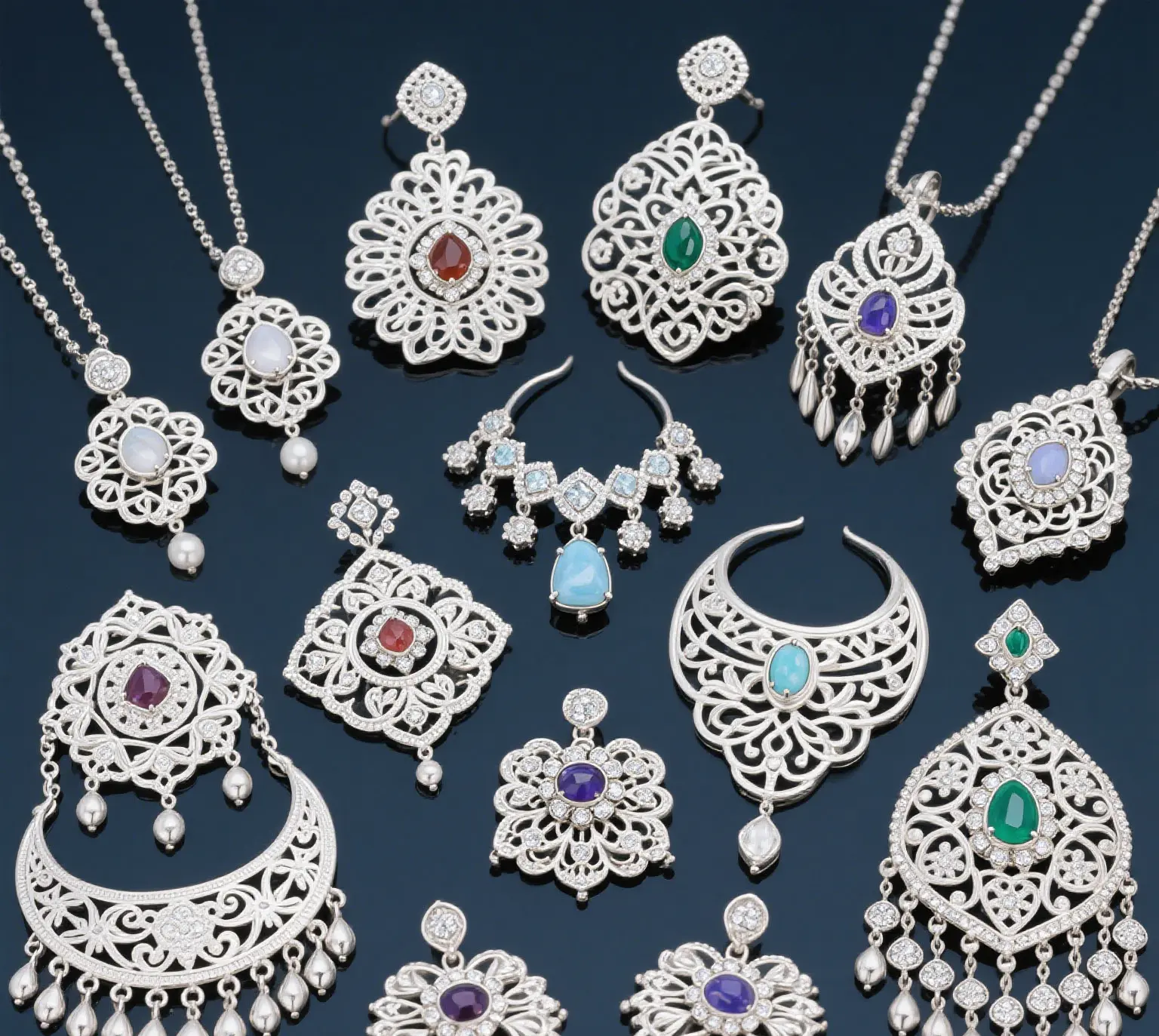
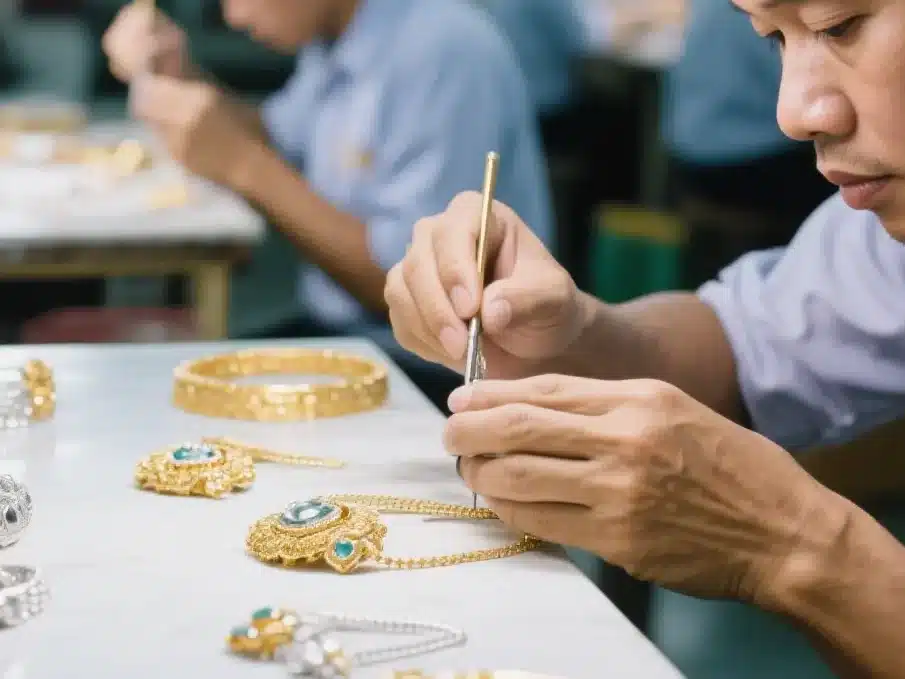
Key Takeaways
- Thailand’s mix of old-world craftsmanship and new-world technology makes it a true global leader in jewelry manufacturing.
- Low production costs and access to a wealth of local and international gemstones offer considerable value for buyers.
- Major jewelry manufacturing centers such as Bangkok, Chanthaburi, and the northern provinces of Thailand each provide different products and specialty expertise.
- Thai makers are known for their detailed hand-finishing, world-class gem cutting, and their willingness to work with you on custom designs.
- Ethical sourcing, regular quality inspections, and certifications from industry watchdogs ensure high levels of production quality.
- Developing Thai factories as valuable partners requires effective communication, collaboration with awareness of lead times, and the establishment of trust-based relationships.
Factors for Choosing Manufacturers
Today, Jewelry factories in thailand is being on of most hub center in world jewelry manufacturing, Finding a reputable and credible sustainable jewelry manufacturer is an important choice and can make or break the success of your jewelry business. Here are some critical factors to consider.
-
Quality of Products: Assess the manufacturer’s quality control processes. Check certifications, read reviews, and request samples to make sure their offerings align with your quality expectations.
-
Production Capacity: Consider whether the manufacturer can meet your volume requirements. A manufacturer who has the capacity under roof can support you in scaling as your business accelerates.
-
Lead Times: Evaluate the typical lead times for production and delivery. Timely delivery is the best way to protect your supply chain and customer orders.
-
Cost Structure: Analyze the pricing model, including hidden costs such as shipping, tariffs, and minimum order quantities. A lower price doesn’t necessarily mean more value.
-
Communication: Effective communication is vital for a successful partnership. Select a manufacturer that is communicative and open during the entire process.
-
Location: The geographical location of the manufacturer can affect shipping times and costs. Decide upfront if you want to work with local manufacturers for faster turnaround or overseas partners for possibly cheaper manufacturing costs.
-
Reputation and Reliability: Research the manufacturer’s history and reputation in the industry. Reputable manufacturers will have reviews and testimonials from prior customers readily available.
-
Flexibility and Customization: If your product requires customization, ensure the manufacturer has the capability and willingness to accommodate your specific needs.
-
Sustainability Practices: Increasingly, businesses are considering environmental impact. Choose manufacturers who are committed to the principles of sustainability, responsible practices, and materials.
-
After-Sales Support: Evaluate the level of support offered post-production, including warranties, returns, and customer service. Having robust after-sales support makes a big difference in your long-term satisfaction. By considering these factors, you can make an informed decision that best suits your business goals and values. This hands-on experience ultimately results in a successful manufacturing partnership.
Production Capacity and Time
When calculating production capacity, start with maximum throughput and consider how long it takes to achieve that. Factors like equipment efficiency, workforce skills, and supply chain reliability play a crucial role. For instance, a plant may aim to produce 1,000 units daily, but frequent machine issues and raw material delays can lower actual output.
Understanding production timelines is essential for accurate forecasting. Also, production capacity can change due to seasonal demands, market trends, and innovations. Companies often adopt lean manufacturing to enhance efficiency, which increases capacity and reduces time to market.
Investing in worker training boosts productivity, as skilled workers can adapt to new technologies with minimal downtime. Regularly reviewing production metrics helps identify trends and bottlenecks, allowing businesses to focus their resources where needed.
Ultimately, balancing capacity and time is an ongoing process that requires regular evaluation. Companies that continuously optimize their production plans are better positioned to meet customer needs efficiently and profitably.
Quality of Materials
The Importance of Quality Materials
Understanding material quality is essential as it significantly affects a product’s durability, longevity, and appearance. High-quality materials, such as those sourced from a sustainable jewelry manufacturer, not only enhance functionality but also improve aesthetics over time.
In construction, using premium-grade steel strengthens a building’s integrity, while relying on standard steel can compromise it. Superior materials resist corrosion and deformation, leading to safer structures. In the jewelry manufacturing industry, the choice of materials is equally critical, as it influences the overall quality of the final product.
In fashion, organic cotton and silk provide exceptional softness, contributing to garment longevity and sustainability. The sourcing of materials greatly impacts quality, with ethically sourced options ensuring rigorous quality control that appeals to consumers seeking responsible practices.
Beyond durability and ethics, the unique aesthetics of materials can elevate a product from good to exceptional, enhancing its desirability and marketability. For example, reclaimed wood is a trending choice in furniture design, appealing to consumers who value uniqueness.
Ultimately, investing in high-quality materials is a wise business strategy that fosters brand loyalty, reduces future replacement costs, and enhances brand reputation. As consumers increasingly prioritize conscious purchasing, businesses that focus on quality materials and craftsmanship will stand out in a competitive market.
Submitting Jewelry Designs for Quotes
Submitting jewelry designs for quotes requires more than just a quick sketch when working with a sustainable jewelry manufacturer in Thailand. The clearer and more detailed your design files are, the better the outcome will be. Factories here operate most efficiently when they have all the specifications upfront, including specific dimensions and details about unique settings and finishes. Just one minor detail can drastically affect pricing or lead time.
Many reliable jewelry manufacturers require a minimum order to provide a quote. This is particularly true in Bangkok or Chiang Mai, where jewelry factories balance custom work with those capable of handling larger orders. If your piece is intricate and ornate, it will demand more time and skilled craftsmanship to produce. Rings featuring delicate work or small stones will likely be more expensive due to the quality craftsmanship involved.
Production costs are based on more than just the gold or silver. Labor in Thailand is high quality, but it takes time. Special tools and machines for unique or intricate cuts and settings increase the cost as well. When submitting a design for quote, be prepared to provide specifications for gemstones, metals and other unique elements.
Although many makers have their own forms for quoting custom work, to determine an accurate quote, they might ask you to complete a worksheet or provide further details regarding your design. This is a standard practice, and it’s common for a jewelry designer to engage in several rounds of revisions. Each new revision presents an opportunity to receive a fresh quote, making the process sometimes lengthy and cumbersome.
Ultimately, clear communication is essential in this process. Understanding what a Thai jewelry manufacturer can and cannot do is crucial. Once you grasp their requirements, the process becomes straightforward and fair for all parties involved.
Jewelry factories in Thailand produce an astonishing array of gold, silver, and gemstone jewelry. With great pride, they continue to manufacture for many of the world’s most recognizable brands. The factories are mostly concentrated in cities such as Bangkok and Chiang Mai.
Skilled artisans there seamlessly combine old and new ways to design and manufacture beautiful jewelry. Through adherence to rigorous quality inspections and fair labor policies, most Thai factories have established a strong sense of trust with buyers. Local gems, including sapphires and rubies, are commonly cut and set in these stores.
Since costs are usually considerably lower in Thailand than in the U.S. Or Europe, it attracts many buyers. What makes these factories special is that they are fair jewelry factories. The central part of the series will focus on their notable measures, smart growth policies and local movements.
Why Choose Thailand for Jewelry?
Today, Thailand has rightfully earned its place as a premier center for jewelry manufacturing. This achievement is due largely to its historical craftsmanship heritage, competitive production costs, high-quality and continuous gemstone availability and its skilled workforce.
The country has emerged as a major global leader in silver exports, holding one of the largest market shares in the world. It is buoyed by a passionate ecosystem of more than 12,000 small to medium jewelry enterprises. Buyers worldwide look to Thailand for high-quality, fashionable pieces that fit all ages and styles, whether they want silver, gold, or gemstone jewelry.
Deep Craftsmanship Heritage
Thai jewelry-making has a deep history, with craftsmanship passed down for over 200 years. This tradition, which originated in the Royal Palace, is still cherished today among local artisans.
The deep craftsmanship heritage influences what gets produced—floral motifs, filigree work, and patterns inspired by temples are just a few examples. Practical techniques such as hand engraving or gemstone setting employ techniques that span generations. Thai jewelers are justifiably proud of their deep craftsmanship legacy.
They deftly combine time-honored aesthetics with current fashions to produce distinctive works that are featured at competitions such as the Bangkok Gems & Jewelry Fair.
Competitive Production Costs
Compared to countries such as Italy or the US, Thailand’s much lower cost of living translates into a much lower labor and operating costs. This enables jewelry factories located here to provide competitive pricing without compromising on quality.
Material sourcing is economical as well, due to local suppliers and streamlined processes. HonHo Jewelry Manufacturer is based in China, but it draws from regional supply chains for stainless steel, brass, and 925 silver.
This plan allows them to offer competitive prices when it comes to custom designs.
Access to Quality Gemstones
Thailand’s markets are awash with sapphires, rubies, garnets, and the like. Some gemstones are sourced from local mines, but most are imported and traded at fairs such as BGJF.
Through direct sourcing, buyers benefit from improved value and rigorous quality control. Thanks to Thailand being a trading center, buyers from all around the world have confidence in the beauty and authenticity of Thailand’s stones.
Skilled Artisan Workforce
Thai artisans hone their skills for years in hands-on environments, sometimes in family-operated studios. Skills include everything from intricate filigree work to goldsmithing and gemstone setting.
These creators have an eye for precision as they merge traditional craftsmanship with modern techniques to create beautiful final products. A number of them innovate with artistic concepts, setting trends in both classical and contemporary jewelry.
Thailand’s Main Jewelry Regions
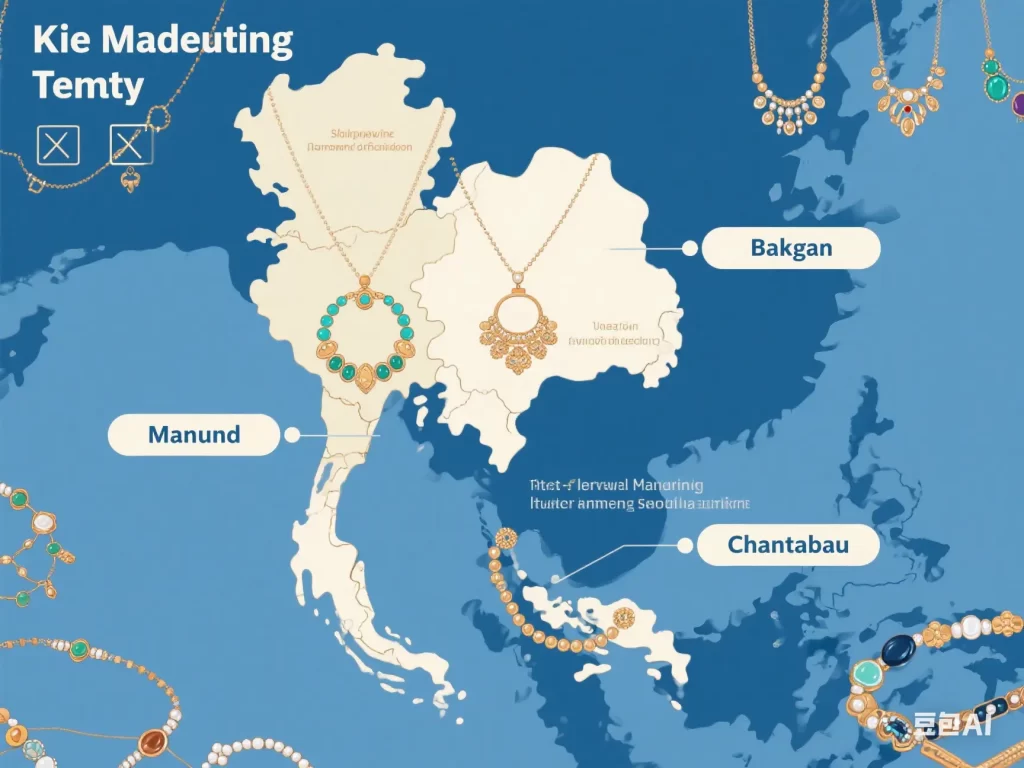
Thailand is a respected, global leader in the jewelry industry. Its triumph is built on a volatile cocktail of expert artisanry, advanced industrial practices, and deep-rooted local culture. Each region of the country has its own distinctive aesthetic and specialization on display. This diversity is what gives the world stage meaning to Thai jewelry.
Regional specialties draw from local culture, materials, and trade networks, adding depth and color to the industry as a whole.
Bangkok: The Bustling Epicenter
Bangkok is the center of jewelry manufacturing and trade in Thailand. The city is teeming with massive factories, tiny workshops, and miles of showrooms. The Silom and Yaowarat districts are home to a treasure trove of upscale gold and gem stores.
While competition is thick, the Bang Rak area buzzes with the sounds of thousands of jewelry traders. Bangkok is home to these massive wholesale markets, providing international buyers with a never-ending selection of everything from basic silver rings to expensive diamond jewelry.
Familiar factories to the region employ a blend of time-honored and contemporary methods, indicative of Thailand’s ability to combine artistry with technology. The city’s role as a trading hub also contributes to pushing Thai jewelry exports to close to $10 billion annually.
Chanthaburi: Gemstone Trading Hub
Chanthaburi has a well-documented history of being a hub of the gemstone trade. Traders here deal in sapphires, rubies and other gems, frequently employing heating and cutting techniques that have been learnt over centuries.
Today, the city’s bustling weekend gem market—one of the largest in Asia—attracts dealers and traders from all over the world. Artisans work with the raw stones to bring out their color, luster and brilliance. Their talent draws in buyers from both Thailand and all over the world.
Northern Areas: Silver Specialists
The north of Thailand, like Chiang Mai and Chiang Rai, are known for their silver jewelry. Artisans here employ traditional techniques to create intricate, hand-forged designs featuring tribal shapes and figures.
Silver jewelry has rich historical and cultural significance in northern Thailand, commonly worn during plant-based festivals and family gatherings. Combined, these regions allow Thailand to continue being the world’s leading silver jewelry exporter.
What Jewelry Do They Make?
Factories in Thailand, known as reliable jewellery manufacturers, produce jewelry that ranges from traditional to ultra-modern, showcasing exceptional quality and craftsmanship. With a focus on sustainable jewelry manufacturing, they incorporate both traditional and non-traditional materials and techniques, creating jewellery pieces that reflect Thai culture while appealing to contemporary jewelry trends worldwide.
Exquisite Gold and Gem Settings
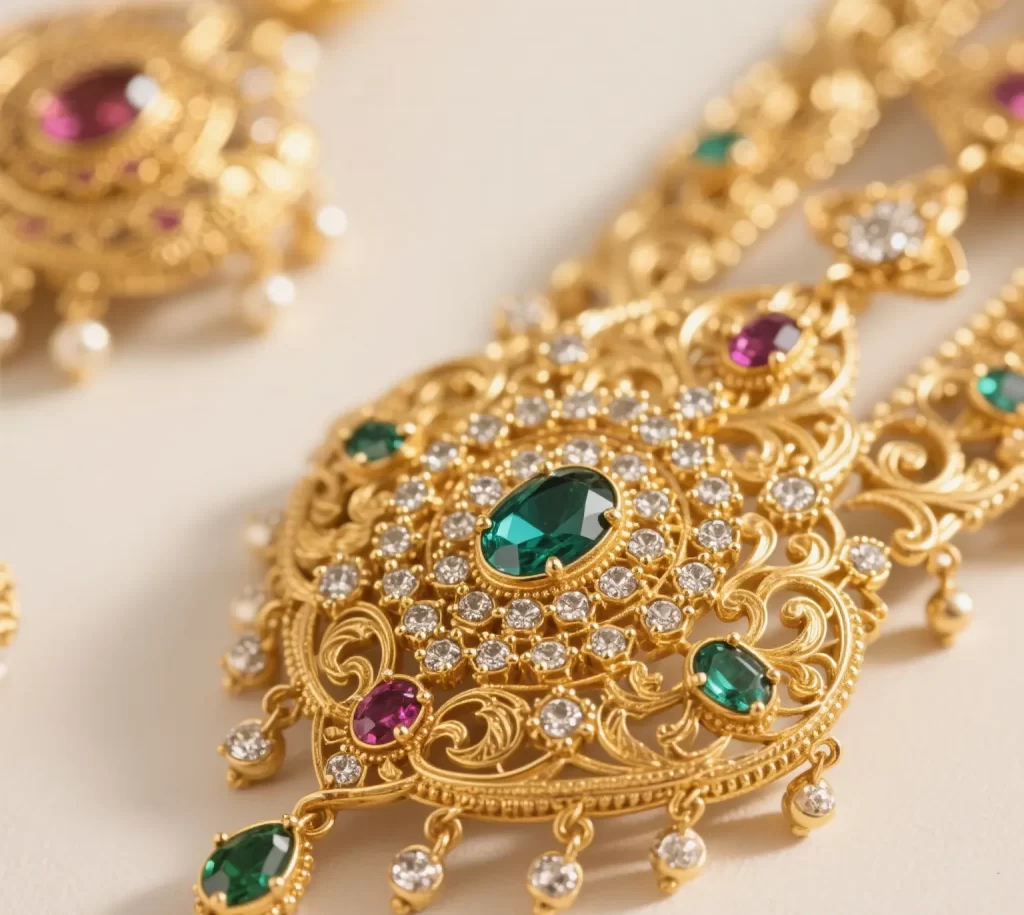
Masterful Gold and Gem Settings Thai gold jewelry is recognized worldwide for its artistry and craftsmanship. Goldsmiths create beautiful, intricate designs, crafting gold into rings, necklaces, bracelets and earrings — usually studded with the world’s rarest gemstones to add a little sparkle.
Other favorite styles are slim bangles, intricate pendants, and big statement rings. Thai gold jewelry typically uses yellow gold, but white and rose gold are popular. Gemstones, such as sapphires and rubies, contribute to color and value, making each piece unique.
Most producers are able to do bespoke creations, re-create antique estate jewelry, or fashion delicate works that take on a light, airy, feminine look.
Intricate Sterling Silver Pieces
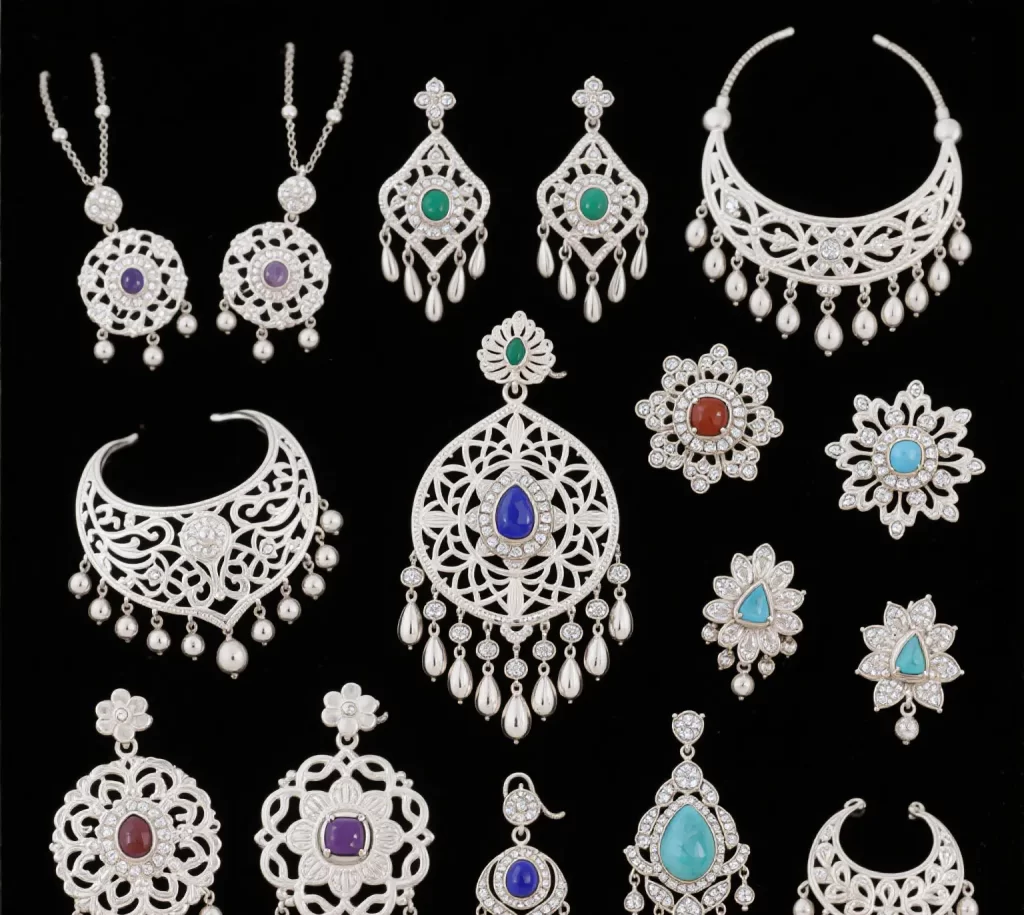
Sterling silver is extremely important to the Thai jewelry industry. Most factories specialize exclusively in 925 silver, producing eye-catching intricate designs and clean minimalist pieces alike.
Through the use of handmade tools and delicate forms, they create intricate sterling silver chains, stamped cuffs, and cutout silver set with semi-precious stones. Local and global buyers seek out these pieces for their sleek silhouettes and intricate craftsmanship.
Special pieces, like antiqued silver lockets or intricate filigree earrings, demonstrate the artistry that goes into Thai silverwork.
Trendy Fashion Jewelry Lines
Thai plants produce tons of fashion jewelry, too. These items are produced based on trend— in vogue chunky chains, colored beads, layered sets. Primarily, they’re affordable, which means more people can purchase them.
Thai designers have an acute awareness of international trends and a willingness and ability to adapt their designs quickly. Trendy rings, charm bracelets, stackable earrings, all are prevalent.
Unique Traditional Thai Motifs
Unique Traditional Thai Motifs Elaborate temple carvings, lotus flowers, or elephants are frequent motifs found on traditional Thai jewelry. These symbols have life, have meaning, have power, and tell stories.
Manufacturers combine these motifs into contemporary works, so the jewelry functions for everyday use while still expressing the culture of Thailand. Rings or bracelets with engraved geometric patterns on the surface or necklaces with charms in the shape of temples are typical.
How to Find Thai Jewelry Factories
Identifying the right jewelry factory in Thailand can be an exciting journey, but one that requires deliberate preparation and defined objectives. Thailand has established an enviable reputation for its skillful jewelry craftsmen, distinctive designs, and a deep-rooted culture of excellence. Bangkok stands out as a central hub, but the entire country offers a wide mix of factories ranging from large-scale producers to small ateliers.
With global demand increasing and as the industry begins to move towards more responsible production practices, it’s all about knowing what to look for and who to believe. The outlined steps below further clarify the process to assist buyers in feeling comfortable and well-informed when making a purchase.
1. Know Your Product Needs First
This is why, before you begin any search process, it is good to have a clear idea of what you want to produce. Thai jewelry factories can produce almost any product you need. They produce anything from amazing gold and silver fine jewelry to trendy, fashion forward pieces in brass or stainless steel.
Start by listing must-haves for your product—type of metal, stone settings, finishes (like oxidized or polished), and any unique design features. Providing detailed design specifications up front can help save time and prevent any confusion about expectations.
Detailed drawings, 3D models, or photographs are useful for conveying your vision. It’s smart to agree on order quantities and price point, as well as any certification requirements from the outset. The more clear, upfront information you provide, the better we can match you with factories that fit your needs.
2. Search Online B2B Marketplaces
Most buyers start their sourcing journey on online B2B marketplaces. These portals display a myriad of Thai jewelry factories with their own product catalogs, ratings, and reviews. Alibaba, Global Sources, and ThaiTrade are popular and they make it easy to compare suppliers side by side.
Shopping on these sites provides a good feel for the variety of styles—contemporary, traditional, vintage finishes—and price ranges. Most factories will exhibit their complete lines, featuring gold vermeil, sterling silver, and pieces with precious stones as well.
Be sure to read supplier reviews thoroughly and verify that each supplier has the required business license or trade certifications. Communicating via the platform can help establish expected turnaround times, minimum order quantities, and customization options. Always verify key business information, including company name, factory physical address, and prior export experience before proceeding further.
3. Visit the Bangkok Gems Fair
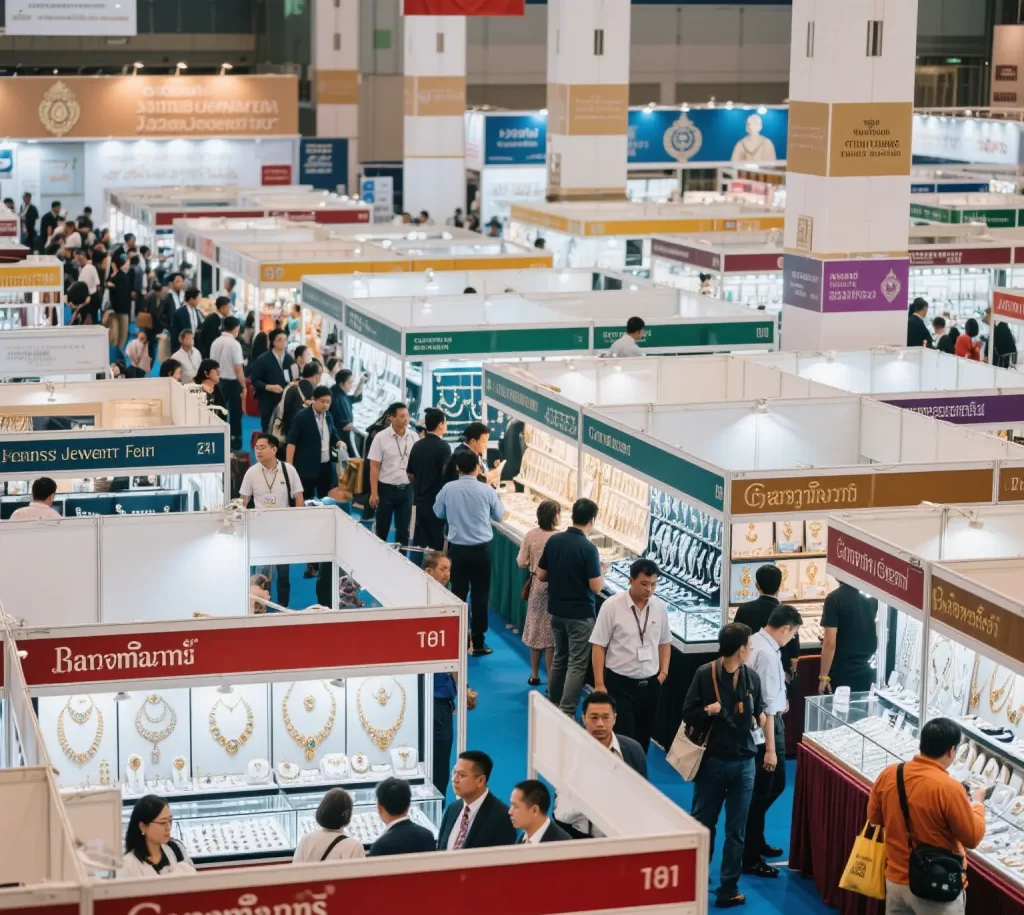
The Bangkok Gems & Jewelry Fair is one of Asia’s largest industry events, held twice a year. It gathers hundreds of Thai manufacturers under one roof, making it a one-stop place to view finished products, meet sales reps, and compare craftsmanship up close.
As mentioned above, this fair is the best place to flag what’s trending globally, source rare stones, and order specific custom design options. Attendees have the opportunity to meet face-to-face with factory owners, making it easier to build a relationship of trust and expedite the negotiation process.
Networking sessions and seminars at the fair are great for learning about industry shifts, such as moves toward ethical sourcing or new design trends. Get the most out of the fair by defining your objectives before you go. Plan appointments with your hottest prospects and be sure to take notes on booth numbers and must-see items.
4. Connect with Trade Associations
Industry groups like the Thai Gem and Jewelry Traders Association (TGJTA) and the Gem and Jewelry Institute of Thailand (GIT) are central to the country’s jewelry ecosystem. These associations vet their registered members and frequently provide a list of reputable factories on their websites.
Joining as a buyer or attending their events opens the door to connections with thousands of verified suppliers and reliable industry data. Trade associations regularly offer seminars and export training programs.
They host international networking mixers that further facilitate buyers’ connections with both large and small boutique manufacturers. For beginners, these organizations are an excellent resource for information on market trends, legal advice, and introductions to reliable industry players.
5. Think About Using Local Agents
Local sourcing agents/consultants can help fill the gaps for buyers from abroad. These agents often have extensive knowledge of the Thai jewelry market. They skillfully match clients with factories that can provide just the right thing, gold-filled chains, hand-set stones or completely custom designs.
Local agents tend to have working proficiency in both Thai and English, which greatly reduces the chances of miscommunication. When searching for an agent, request client references and verify that they maintain registration with local trade organizations.
While hiring an agent adds cost, it can save time and reduce risk, especially for first-time buyers or those with complex orders.
6. Explore Jewelry Districts Directly
Bangkok’s jewelry districts – like Silom Road and the Gems Tower area – are thick with factories and showrooms. These districts provide buyers with the opportunity to see products in person. They have the opportunity to meet with craftspeople and really get a taste for the myriad styles – from complex silverwork to bold contemporary designs.
On-the-ground visits allow you to identify emerging trends, evaluate quality in real-time, and in many cases gain access to more competitive pricing via direct negotiation. While on location, be clear about your requirements, inspect sample quality, and inquire into customization or order production times.
Clear, respectful, but assertive negotiation is the norm and will lead you to mutually beneficial terms.
7. Get Recommendations from Contacts
Recommendations from industry contacts, peers met at trade shows, or even local business councils usually connect you with trustworthy, time-proven factories. Most buyers identify their optimal partners through jewelry community word-of-mouth.
As you build trust and share candid feedback with your contacts, they may be able to open doors to hidden gems or factories that don’t have online listings. Connecting via LinkedIn, relevant industry forums, or in-person at trade events can help cultivate relationships that develop into fruitful long-term partnerships.
8. Check Factory Backgrounds Thoroughly
The importance of due diligence Prior to engaging with a factory, research is critical. Check the reputation of Thai factories, how long they have been in business, and experience exporting. Look for verified customer reviews, third-party factory audits, and history of industry awards received.
Verify the factory’s membership in international trade associations, and seek transparency on working conditions or environmental stewardship. Always verify their legal business registration status. Check online reviews, verify where they source their materials, and request references from past clients.
9. Request Samples and Prototypes
Before you make a large order, request samples or prototypes first. Samples can help you ensure the quality, weight, and finish in real life, particularly in larger pieces with intricate designs or multi material composition. Prototypes are essential for custom pieces and provide an opportunity to test fit, comfort, and durability.
The best factories know to look for and anticipate this step. Communicate clearly what you want changed and when you expect revisions of your samples. Clear and timely communication prevents mistakes in your main production run.
For those considering options outside Thailand, HonHo Jewelry Manufacturer in China provides custom stainless steel, brass, and 925 silver pieces. HonHo provides waterproof, non-tarnish, gold vermeil, gold-filled jewelry with more than 15 years of experience.
This allows buyers greater freedom in their sourcing to better align with specific product objectives.
The Unique Thai Factory Edge
Thailand truly is a remarkable place for jewelry making in the world. The country’s factories combine skills politically ingrained for centuries with cutting-edge technology, making them unique both in skill and adaptability. Thai workshops combine decades of ingrained methods with modern machinery, allowing them to stay competitive in a rapidly evolving global economy.
That blend of artistic influences makes jewelry produced by Thai artisans particularly distinctive in appearance and character.
Marrying Old Skills, New Tech
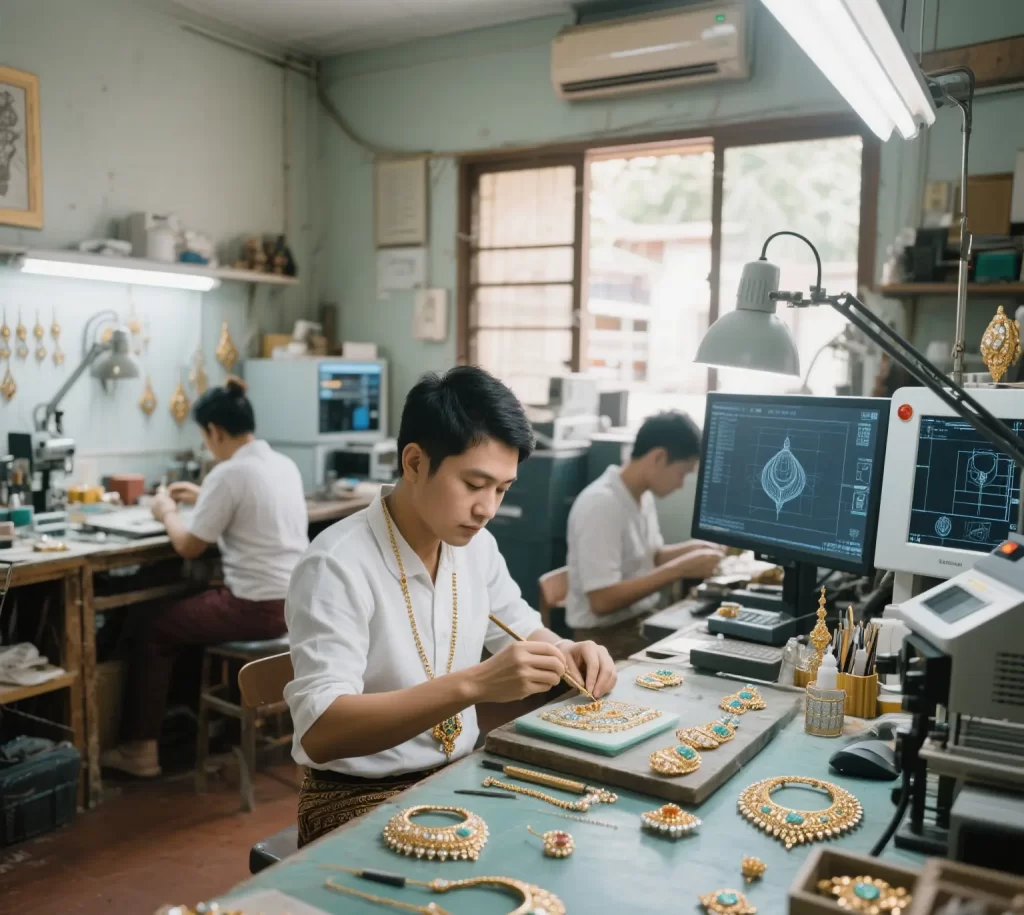
Thai jewelry factories marry old world skills with new world technology. They marry time-honored handcrafting techniques with the latest machines, including German laser soldering and marking tools. Adopting these tools puts us to work more quickly and with more nuance.
Take for instance, traditional gold filigree is now combined with computer-aided design (CAD) for more intricate patterns and shapes. This fusion allows producers to create works that seem as traditional as they are contemporary. Introducing new tech leads to more accurate work and therefore, less wasted resources.
Unmatched Hand-Finishing Detail
Unmatched hand-finishing detail is the cornerstone of Thai jewelry artistry. Because skilled workers file, polish and set their stones by hand, no two pieces are identical. Intricate gemstone settings and fine gold detail illustrate the commitment of Thai makers to their craft.
This impeccable level of detail is especially important in luxury segments, where customers expect unique, hand-crafted products.
World-Class Gem Cutting Skills
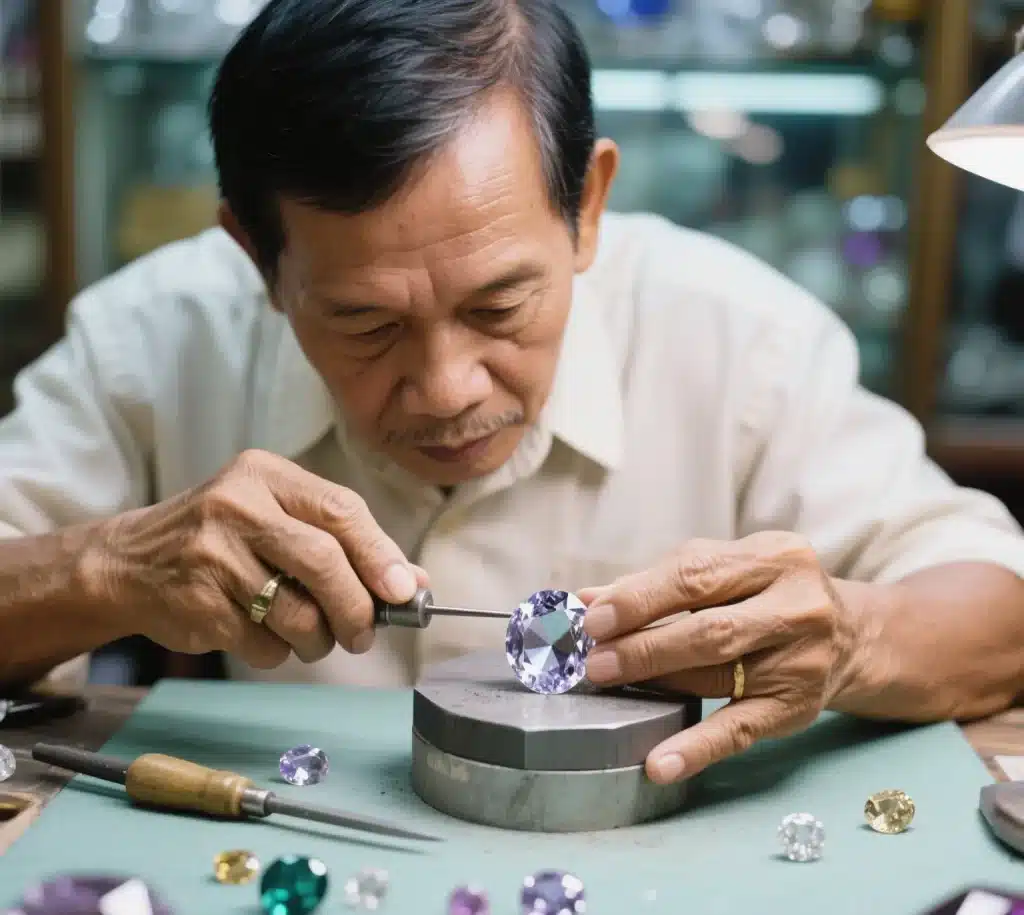
Thailand is the world’s center for gem cutting, with skilled craftsmen trained for decades to achieve perfection on each cut. Stones cut in Bangkok’s gem centers, known for their exceptional quality, sparkle with a brilliant sheen and precise facets, enhancing the beauty and worth of each jewellery piece.
Flexible Custom Design Capabilities
Thai factories are very much willing to do custom work, collaborating closely with clients to develop ideas and make them reality. They can make those style changes quickly, going from traditional to contemporary, depending on consumer demand.
A lot of custom work, such as short runs for art or brand projects, flows from this collaborative spirit. HonHo Jewelry Manufacturer in China is an excellent example of a flexible custom design factory edge. What Thai makers are really good at is speed of production and creative collaboration.
Strong Focus on Quality Output
Thai factories employ rigorous quality control, beginning with material selection and continuing through final polishing. Most have ISO and/or Responsible Jewellery Council (RJC) certifications, and it reflects an entrepreneurial spirit that strives for excellence.
They are deeply committed to the origin of their materials, ensuring that gems and metals are sourced ethically.
Ensuring Quality and Ethics
Thai gems and jewelry factories sparkle with precision artistry and rich ethnic culture. They’re responding to a significant movement within the business community for more ethical and sustainable business practices. These ethical standards have a direct impact on the day to day operations of these factories. They regulate everything—from how workers are treated to how raw metals and gems are sourced.
Quality checks are important to ensure that pieces are safe, lasting, and in line with the spirit of what buyers intend. Many brands now put real effort into making sure their supply chains are clear and fair, which helps build trust.
Standard Factory Quality Checks
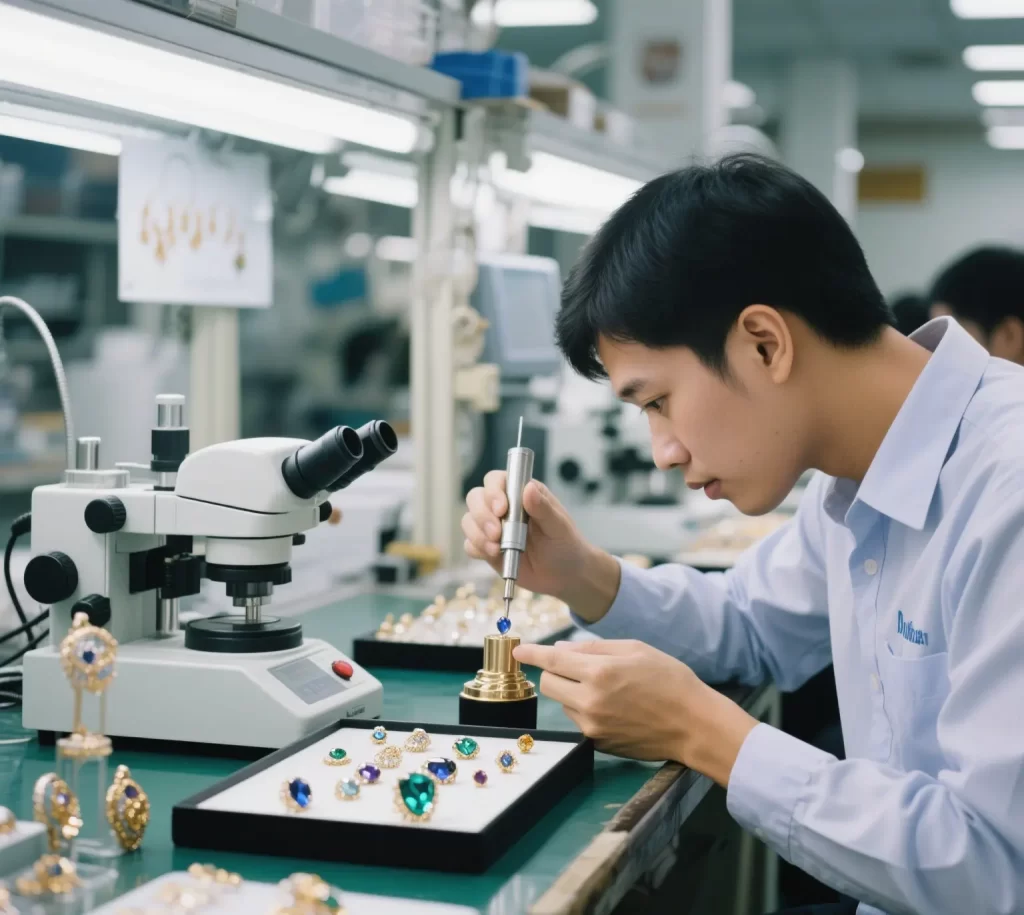
Only a few Thai factories implement specific procedures for quality checks at each stage. They color grade Tanzanite, sort diamonds by hand, search for inclusions, and lab-test metals and gems, and test every clasp and setting. These quality assurance steps take place before, during, and after production of each piece.
For instance, many jewelry stores employ x-ray testers to confirm the purity of gold. Some people use digital scales to weigh stones. That constant quality control ensures that each individual part lives up to the same standard for appearance and durability. Larger brands typically have their own QA teams inspecting each batch before leaving the factory.
Asking About Ethical Sourcing
Asking questions about the sourcing of our gems and metals is the right first step. Ethical Thai factories have a transparent supply chain and can provide documentation on the origin of stones, gold, and silver. They work only with trusted, conflict-free mines and traders who adhere to fair labor practices.
Others are already making this information available to potential buyers, reducing risk and creating a more robust brand. If you’re going to go there, look for fields on free text, citation of references, and authentic discussion of labor rights.
Looking for Industry Certifications
Popular certifications are important certifications. Groups like the Responsible Jewellery Council or the Thai Gem and Jewelry Traders Association set high bars for both quality and ethics. Independent audits conducted by these organizations ensure that a factory is adhering to clear standards set in place.
This guarantees equitable working conditions, living wages, and pollution-free sourcing. When a Thai artisan possesses these marks, purchasers can feel assured they are receiving honest craftsmanship and sturdy products.
Tips for Factory Collaboration

Collaborating with reliable jewelry manufacturers in Thailand not only allows you to work with talented teams and the latest equipment but also provides access to exclusive jewelry design expertise. To ensure these partnerships are mutually beneficial, honest communication and an established working relationship go a long way. Since the local jewelry manufacturing industry is likely to combine time-tested crafts with new techniques and technologies, knowing the local scene keeps you from getting blindsided.
Bridge the Communication Gap
Communication dictates everything from the initial factory visit to the ongoing technical assistance. It’s easy for differences in vocabulary to cause confusion, particularly with industry jargon or design specifications. Though most Thai factories communicate primarily in English, the clearer, more straightforward your language is, the less opportunity there is for misunderstanding.
Tools such as collaboratively managed online documents, messaging platforms, and video conferencing are invaluable for maintaining clear communication and ensuring that everyone is aligned. Weekly or biweekly check-ins provide an opportunity for both sides to ask questions and provide comments. This iterative process results in fewer errors and a more seamless overall progression.
Understand Lead Times Clearly
For example, lead times in Thailand may change depending on the time of year, the size of your order, or due to supply chain disruptions. Understanding your factory’s standard pace of production allows you to plan your launches or restocks accordingly. Understand their lead times and plan for holidays or other busy seasons with additional days of buffer.
Clear discussions about deadlines ensure that both parties understand what is possible and what isn’t. That’s why it’s prudent to request milestone progress reports, so you can identify potentially major delays as soon as possible.
Discuss Minimum Order Needs
Minimum order quantities influence your cost structure and inventory strategy. One of the beauties of Thai factories is that their minimums are often much lower than some of their global peers, bolstering smaller brands or custom runs. Discuss minimum order requirements.
Discuss your needs transparently and have a conversation about what the factory is capable of fulfilling. If you’re new to this, see if they can do a small test run or pilot order. Align your order size with the factory’s specialty, and you’ll receive more favorable cost versus quality balance.
Build Trust for Partnerships
Trust develops as you consistently and transparently work hand-in-hand. Being present at the factory, providing honest and constructive feedback, and being transparent about the design goals will all foster a collaborative rapport. They love long-term partners and not just short quick jobs.
Tell them what you need right from the start and hear them out on what they need. High-quality, forward-thinking factories will be already practicing ethical and sustainable best practices. Work with partners who have the same ethos as you.
Learn from the pros. Examples of brands that really put the time into building these relationships get higher quality and more pleasant surprises.
Potential Sourcing Hurdles
Sourcing jewelry from factories in Thailand offers fantastic advantages in the jewelry manufacturing industry, but it also presents some hurdles. These challenges can range from cultural differences to shipping issues, and the necessity to protect your designs from piracy. Companies focused solely on Western markets may struggle to navigate Thai business culture. Negotiations often require more time, and building trust is essential in this sustainable jewelry business environment. Here’s a detailed look at what can snag you and how to avoid it.
Language and Culture Differences
One major barrier is language. Not all Thai suppliers speak English well, leading to delays in closing deals or even confusion. Thai business negotiations are a lot more indirect than many Western buyers are used to.
Cultivating a productive relationship is important. It is often even more so than cost or contract terms. You will achieve much more successful outcomes if you practice patience and maintain an adaptable spirit.
Just learning a few basics about Thai customs and being polite and respectful will take you far. For instance, being courteous, being a better listener, and slowing down discussions will put your prospective supplier on the defense.
When possible, partner with a local agent or interpreter to help close this gap.
Managing International Shipping
Getting jewelry out of Thailand and into your shop isn’t a fast or an easy process. Customs regulations are ever-evolving, and documentation must be in perfect order.
In the world of e-commerce, delays can equate to lost sales or increased expenses. It’s a good idea here to work with trusted freight forwarders and ensure that you and your supplier have a strong understanding of shipping terms.
Be sure to check the shipping times and costs in advance.
Protecting Your Unique Designs
Jewelry design is a highly competitive business, so protecting your creative concepts is crucial. Use well-drafted contractual agreements that clearly define ownership rights over the design.
Don’t give away the farm until you feel confident in your factory’s operations and integrity. Developing a close, long-term relationship with your manufacturer reduces the chances of design reproduction or theft.
Chinese HonHo Jewelry Manufacturer includes custom design protection in their contracts. Similar production methods are used for their stainless steel, brass, and 925 silver jewelry.
Conclusion
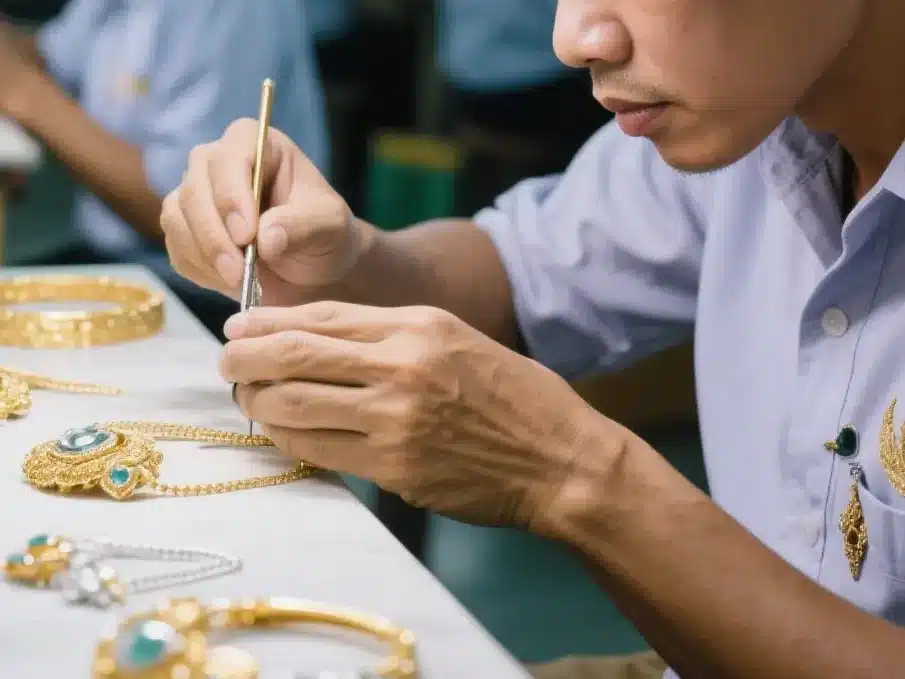
This makes Thailand one of the premier places for jewelry manufacturers. Its factories combine artistry, deep community connections, and a vibrant creative culture. Bangkok and Chiang Mai continue to make it exciting with new ideas and experienced talent. The factories have a great understanding of producing gold, silver and gems that are suitable for both large brands and small independent shops.
Those who are interested in doing production work with Thai factories should test for quality, communicate directly, and understand Thai culture. Sourcing in Thailand provides the best combination of quality and craftsmanship. Want to experience the exquisite craftsmanship of Thailand for yourself? Contact a local factory directly, or engage with a local trade association. Thai jewelry factories truly have something tangible to provide for everyone in search of new, original pieces, or expanded business connections.
Frequently Asked Questions
Why is Thailand popular for jewelry manufacturing?
Thailand can offer cheap artisans, high technology, and a competitive gemstone market. This is what makes it a worldwide leader for quality, affordable jewelry manufacturing.
What types of jewelry do Thai factories produce?
Thai factories can produce everything from mass-produced styles to one-of-a-kind, custom jewellery, showcasing their expertise in the jewelry manufacturing industry.
Which regions in Thailand are known for jewelry production?
Bangkok, Chanthaburi, and Chiang Mai collectively contribute to a significant portion of the jewelry market, showcasing specialties that range from gemstone expertise in Chanthaburi to refined jewelry craftsmanship in Bangkok.
How can I find reliable jewelry factories in Thailand?
Explore online directories and connect through local business networks to identify reliable jewellery manufacturers. Always review factory reviews and certifications, and request samples before making any commitments in the jewelry manufacturing industry.
Are Thai jewelry factories ethical and sustainable?
The majority of Thai jewelry manufacturers comply with international standards, ensuring quality craftsmanship. Check for certifications such as Responsible Jewellery Council (RJC) as indicators of ethical sourcing and production.
What are common challenges when sourcing from Thailand?
Language barriers, cultural differences, and varying quality standards can impact the jewelry manufacturing industry. Unambiguous communication and contracts that outline every expectation in advance can prevent costly miscommunication.
What makes Thai jewelry factories stand out?
Thai factories combine old world craftsmanship with new world design, making them a reliable jewellery manufacturer. Their highly skilled labor and competitive pricing provide a unique advantage in the global jewellery industry.
share this recipe:
Still hungry? Here’s more

Gold Filled vs Vermeil Guide Differences Durability and Value
What Is Gold Filled Jewelry? Gold filled jewelry is my go-to recommendation when someone wants

How Much for a Gold Necklace 2026 Price Guide and Tips
Understanding Gold Purity and Karats When people ask “how much for a gold necklace?”, the

Spiritual Jewelry Symbols Guide- Meanings and How to Choose
How to Use This Spiritual Jewelry Symbols Guide Spiritual jewelry only works for you when
Ready to Design Your Own Jewelry?
Have an idea in mind or need help shaping it? From sketches to finished pieces, our custom jewelry team will work with you step-by-step to bring your vision to life.
